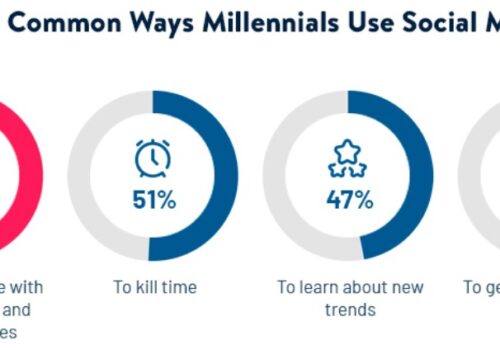Looking into 2025, the Small Business Trends report is like a big picture of what’s going on with small businesses in America.
It’s made from talking to lots of small business owners who work really hard. They share their stories about running a business, what they hope for the future, and how they’re doing with all the big changes happening around them.
This report puts all these stories together to show what life is like for small businesses and what’s new and changing for them.
This year’s small business trends are as follows:
| Category | Detail |
|---|---|
| Motivation for Starting a Business | 60.87% wanted to be their own CEO; 47.64% dissatisfied with the corporate world |
| Business Owners’ Motivation | 31.00% motivated by passion; 21.36% started due to opportunity or unemployment |
| Business Owners’ Happiness | 74.86% reported being somewhat or extremely happy; Average happiness rating: 3.95 out of 5 |
| Generational Divisions | Generation Gap Boomers: 45.45%; Gen X: 46.46%; Millennials: 7%; Gen Z and post-war business owners: less than 1% |
| Business Diversification | Female business owners: 22.35%; Male business owners: 77.47% |
| Racial Demographics | Caucasian or White: 84.75%; Black or African American, Hispanic, Latino, or Spanish Origin, Asian or Asian-American: around 4% each |
| Political Affiliation | Independent/unaffiliated: 31.87%; Republican: 41%; Democrat: 22% |
| Business Age | 0-5 years old: 51%; 6-10 years old: 22.68%; 11-15 years old: 11%; 16+ years old: less than 8% |
| Business Type | Independent, non-franchise: 58.98%; Franchisees: 41.02% |
| Top Industries | Retail: 15.05%; Food & Restaurants: 13.71%; Business services: 10.10% |
| Profitability | 65% of business owners reported being profitable |
| Business Expansion | 51.80% focused on expanding current location, 26% maintaining the current state of business |
| Hiring Challenges | Staff recruitment and retention: top issue for over 50%; 70.73% found hiring somewhat or extremely challenging |
| Response to Hiring Challenges | 63.17% increased wages; 33% focused on retaining current staff |
| Pandemic Impact | 83.36% believe their business will survive COVID-19 |
| Small Business Employment | Small businesses employ 46.8% of the private workforce |
In 2025, Who Will be the Owners of Small Businesses?
While everyone has their own reasons for starting a business, there are a few common motives. Entrepreneurs started their ventures mostly because they wanted to be their own CEO (60.87 percent) and were dissatisfied with the corporate world in the US (47.64 percent ).
A considerable number of company owners (31.00 percent) were motivated by the chance to pursue their passion, and a significant proportion (21.36 percent) claimed that they got into business since an opportunity arose or because they were recently unemployed (23.44 percent ).
Boredom or economic stress after retirement looks to be a factor as well, with more than 20 percent of respondents saying they launched their company because they were “not ready to retire.”
Image Credit: Pexels
Despite the difficulties with hiring and COVID-19, the vast proportion of small biz owners (74.86 percent) said they were either somewhat or extremely happy.
Around 15 percent of business owners said they were somewhat or very upset, with the remaining 10 percent of the total saying they were neutral.
The average rating was 3.95 on a rating of 1 to 5, with 1 indicating “extremely unhappy” and 5 indicating “very happy.” When compared to other happiness scales throughout the world, company owners appear to be happier than ordinary Americans.
The top two generational divisions this year were the Generation Gap Boomers (45.45 percent) & Gen X (46.46 percent).
Millennials accounted for slightly over 7 percent of individuals polled, while the eldest and youngest among us – Gen Z “Zoomers” and post-war business owners — accounted for fewer than 1%. In the next few years, we predict the proportion of Gen X company owners to continue to rise.
It’s worth noting that our respondents’ lack of Millennials clearly contradicts other published statistics that imply Millennial entrepreneurship is on the rise.
Whether it’s because Millennials are hesitant to label their businesses as “small business,” the epidemic had a disproportionate impact on Millennial businesses, or something else, our findings contradict each other.
Quick Links:
- Out-of-the-Box Marketing Tips for Small Businesses
- Most Important LinkedIn Stats You Should Know
- Top Video Marketing Stats You Should Know
- Amazing AR Statistics, Facts, and Trends To Consider
- Most Fascinating Oligarchs Statistics, Facts, and Figures: Top 3 Country
- Significant Reddit Statistics
Conclusion: Small Business Trends 2025
Small businesses in America are facing various challenges but are also finding new opportunities.
The trends show that small businesses are a vital part of the economy and are continuously adapting and growing.
Are you a small biz owner? Did this article help you in any way? Let us know your thoughts and feedback in the comment section below.
Sources:
No such sources are mentioned on the website again, so I will put the link to the source website here https://www.guidantfinancial.com/small-business-trends/









